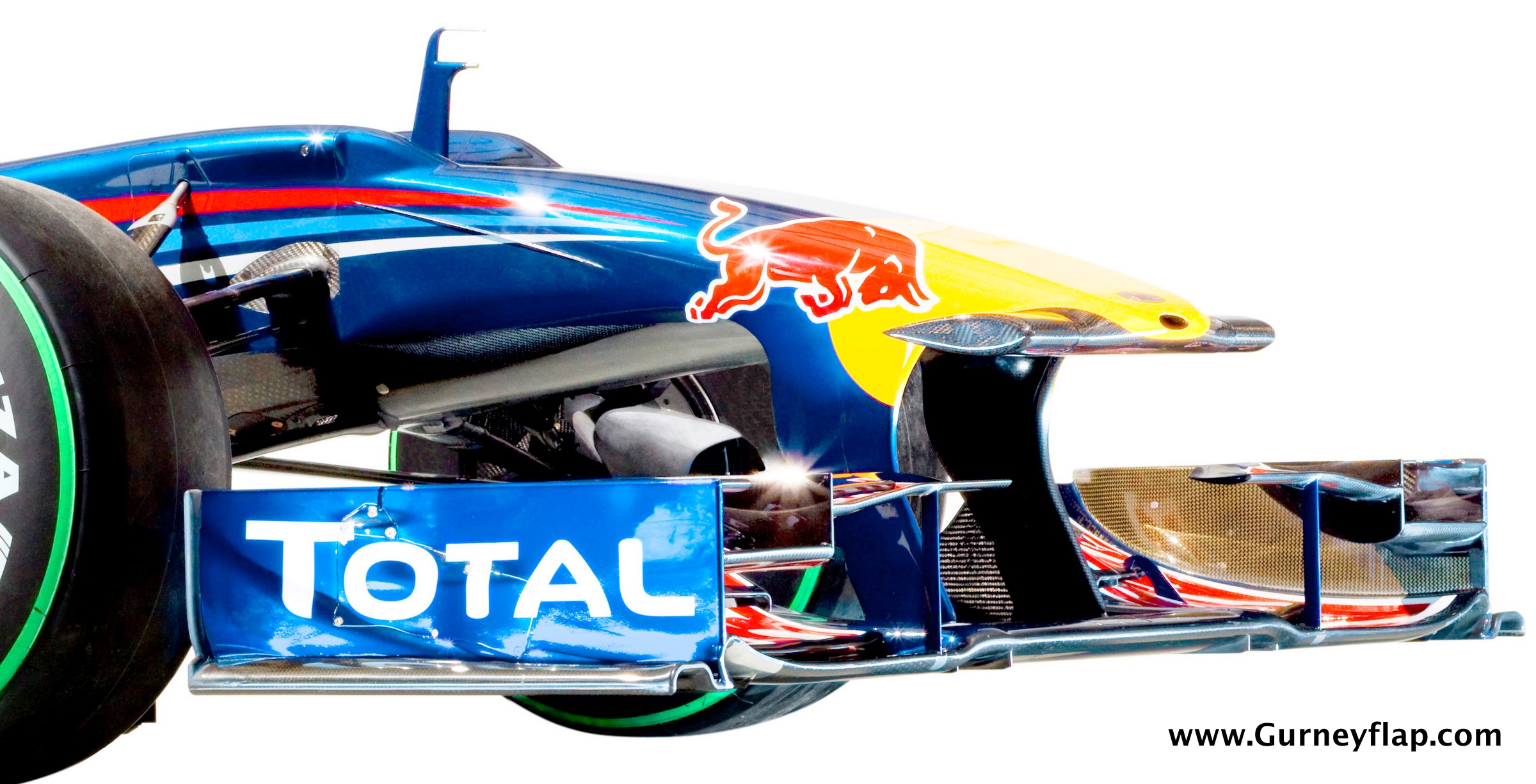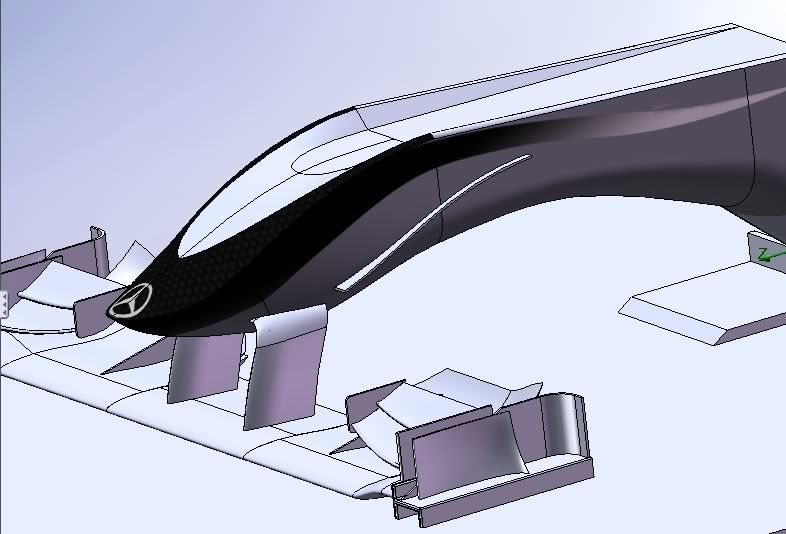The McLaren nose cone does actually have a very similar "kink" on the underside if you look here:ringo wrote:I don't think is is doing what the lower surface of the Merc. nose is doing.

The McLaren nose cone does actually have a very similar "kink" on the underside if you look here:ringo wrote:I don't think is is doing what the lower surface of the Merc. nose is doing.


when the air expands under the nose the pressure DECREASES. Which is a desireable effect. The Ideal Gas equation covers this effect. The idea behinds Newey's V nose isn't anything to do with decreasing or increasing pressure underneath or above the nose, it arises from the regulations stipulating that the tub must be atleast a set height and width but Newey realised that they don't have to be relative to each other, i.e. Not joined at the corners. By ofsetting the sides he could create a V at the bottom which has two advantages.ringo wrote:Looking at it, i would deduce it was an effort to increase front grip, by having that surface slanted against the flow. I'd say it has nothing to do with channeling air. It's basically a turning vane, where changing the momentum of the air results in a reaction force on the nose, which happens to be in the vicinity of the the front wing and wheels.F1_eng wrote:Confused_Andy, how can you say that Mercedes GP haven't done any good cars in a long time? Only the one that won the world championship last year, it would have been even more convincingly if it weren't for the drivers making a hash of it.
The nose design is not about chaneling air down the nose, in-fact its nothing to do with the top surface at all. I'm sure someone on here must have worked-out the philosophy behind the design?
They may be looking for additional front end grip with those narrower tyres.
The only problem i have with the design is the underside, they should not have followed the contour of the upper surface. I would make it more like Newey's design and keep the underside as straight as possible. Mercs underside only acts to expand the air and increase pressure under the car, which is not desirable.
Newey style:
wesley123 wrote:@biggles; another positive effect of it is that it reduces frontal area around the nose.
Negative effects are that it in some sort increases skin friction, it reduces driver sight, the height is in theory a bit lower.
Another positive idea is that in theory you could put the tub way lower, the v reaching the reference plane, this might be an idea for 2011 where underbody becomes less important, by doing that you can place the weight incredibly lower.
Nopebiggles22 wrote:ringo wrote:Looking at it, i would deduce it was an effort to increase front grip, by having that surface slanted against the flow. I'd say it has nothing to do with channeling air. It's basically a turning vane, where changing the momentum of the air results in a reaction force on the nose, which happens to be in the vicinity of the the front wing and wheels.F1_eng wrote:Confused_Andy, how can you say that Mercedes GP haven't done any good cars in a long time? Only the one that won the world championship last year, it would have been even more convincingly if it weren't for the drivers making a hash of it.
The nose design is not about chaneling air down the nose, in-fact its nothing to do with the top surface at all. I'm sure someone on here must have worked-out the philosophy behind the design?
They may be looking for additional front end grip with those narrower tyres.
The only problem i have with the design is the underside, they should not have followed the contour of the upper surface. I would make it more like Newey's design and keep the underside as straight as possible. Mercs underside only acts to expand the air and increase pressure under the car, which is not desirable.
Newey style:
when the air expands under the nose the pressure DECREASES. Which is a desireable effect. The Ideal Gas equation covers this effect. The idea behinds Newey's V nose isn't anything to do with decreasing or increasing pressure underneath or above the nose, it arises from the regulations stipulating that the tub must be atleast a set height and width but Newey realised that they don't have to be relative to each other, i.e. Not joined at the corners. By ofsetting the sides he could create a V at the bottom which has two advantages.
1) A single keel suspension geometry layout can be used, both lower wishbones can now mount at the bottom of the V.
2) The tub now acts as a large turning vane because it has 2 large angled faces, forcing more air between the tub and tyres, therefore feeding both the radiators and diffuser more efficiently.

